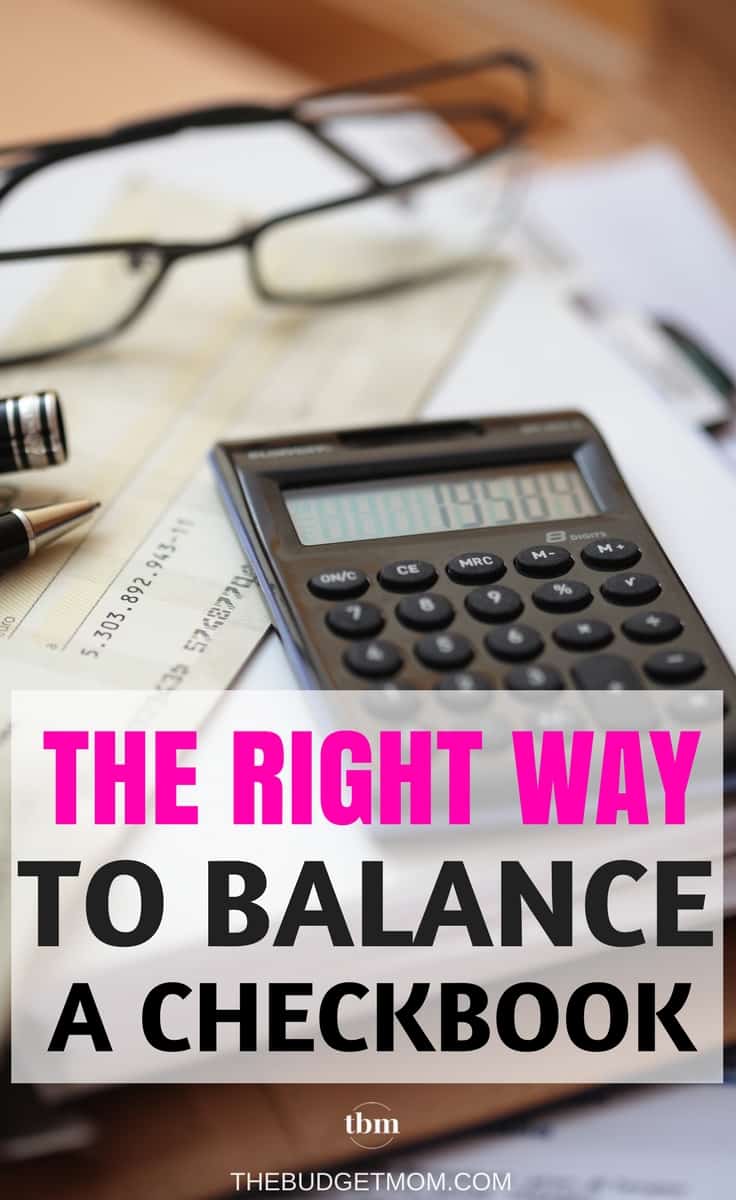

Here are some suggestions on how to balance your checkbook in the 21 st century, courtesy of : Balancing your checkbook is still a valuable tool in money management, it’s just now easier than ever to do. It has in many ways simplified our lives, but it also can make it a lot easier to overspend without even realizing it.Ĭheck registers may be outdated, but tracking your spending is not. With copious advances in technology, banking online is safe, secure and convenient.

Unless you’re paying rent or making a big purchase, most of us no longer rely on checks to make payments. You may also need to recheck your math to be sure additions and subtractions in your register were made correctly.Perhaps you remember your mom or dad – or yourself! – sitting down with their paper bank statement at the end of each month, meticulously comparing it to the check register in their checkbook and making sure finances balanced out. If the numbers do not match you may need to review your transactions to be sure all items were recorded correctly.Compare this amount to the ending total in your checkbook. This will calculate what your checkbook balance should be. Click on the "Calculate Balance" button.These are deposits you have made to your account but do not appear on any bank statement to date. These will be items that were not cleared in step 3. Locate any outstanding deposits and enter them above.These include ATM transactions, Point of Sale (POS) charges, checks, etc. These are withdrawals that you have made but do not appear on any bank statement to date. Locate any outstanding drafts and enter them above.Place a check mark in your checkbook register beside each transaction that appears on the bank statement as having cleared. Compare your bank statement with your check register to see whether all of the transactions you have made have cleared your account.Get the ending balance from your bank statement and enter it in the first field above.If you do not record service charges or interest in your register you must enter them above.Locate any interest payments, special charges, automatic withdrawals, or automatic deposits and be sure they are all entered into your check register and that your total is updated.The bank records are in the form of your periodic statement. Balancing your checkbook assumes you have been keeping your own record of bank transactions and that you are now reconciling your records with the bank records.See the detailed steps shown below the calculator.īefore using the checkbook balance calculator be sure any interest and other automatic deposits or withdrawals in your bank statement have been included in your checkbook balance. The total you calculate should match the current balance of your checkbook. To balance your bank statement and checkbook you will get the ending balance of your latest bank statement then add or subtract any transactions in your checkbook that have not been included on your latest bank statement. Outstanding Deposits Deposits in your register but not appearing on this statement. Outstanding Drafts Withdrawals in your register but not shown on this statement including ATM transactions, Point of Sale (POS) charges, checks, etc. Interest Enter any interest received on this statement that you Have not calculated into your checkbook register balance. Service Charges Enter any service charges on this statement that you Bank Statement Balance Enter the ending balance from your current bank statement. Otherwise leave these blank.Ĭheckbook Register Balance Enter the ending balance in your check register. Interest into your checkbook register you should enter them here. * If you did not record bank service charges or Use this calculator to balance your checkbook.


 0 kommentar(er)
0 kommentar(er)
